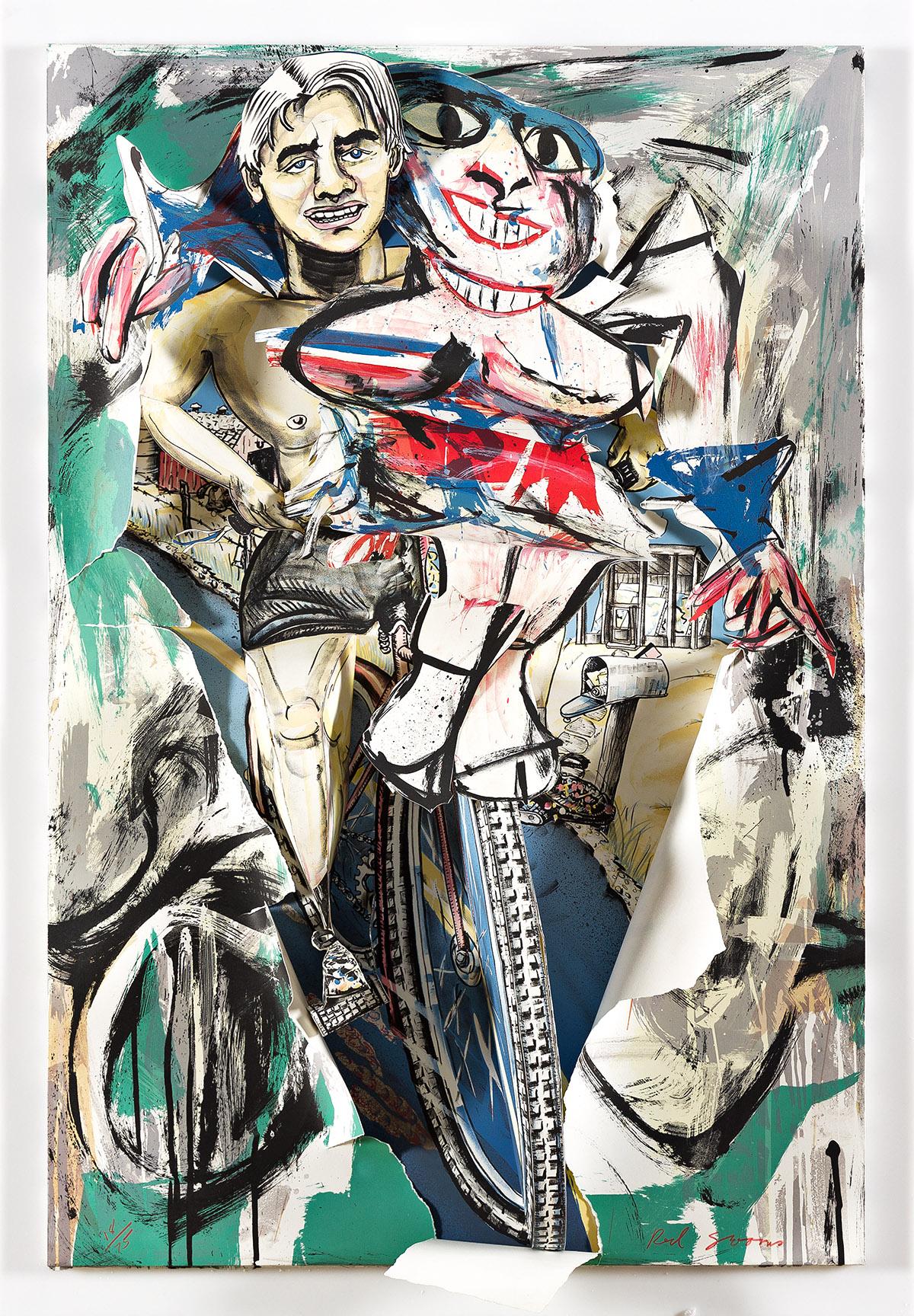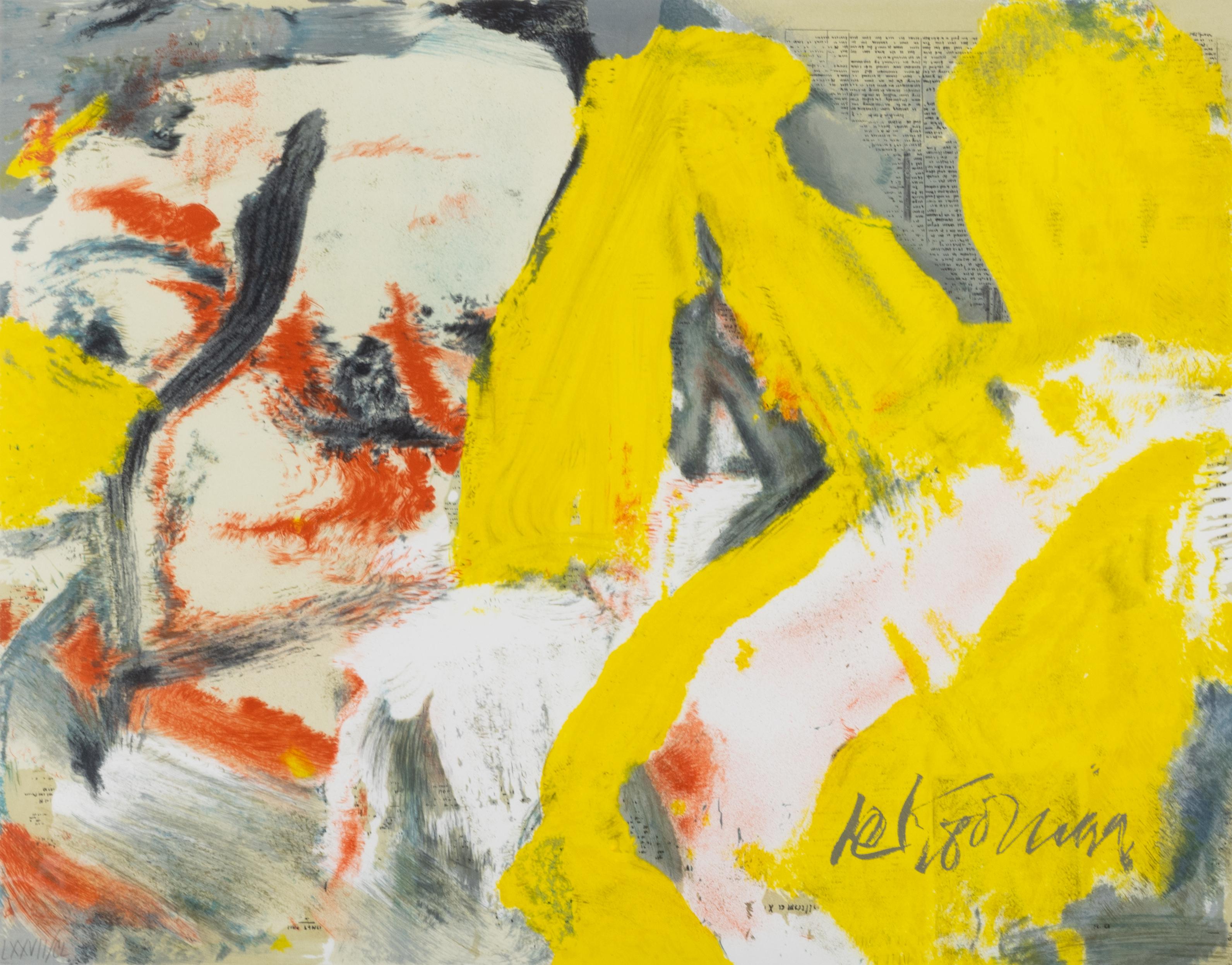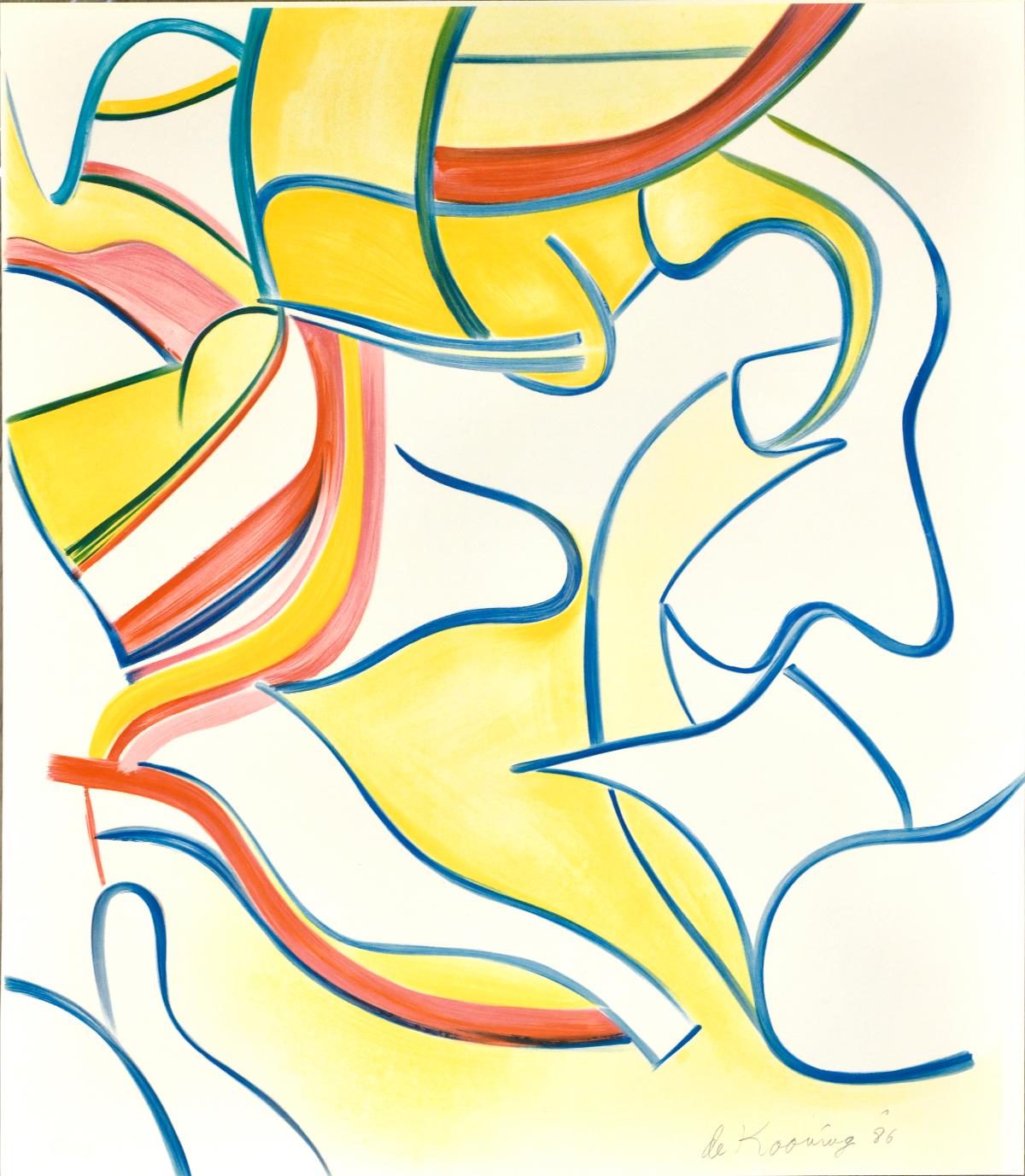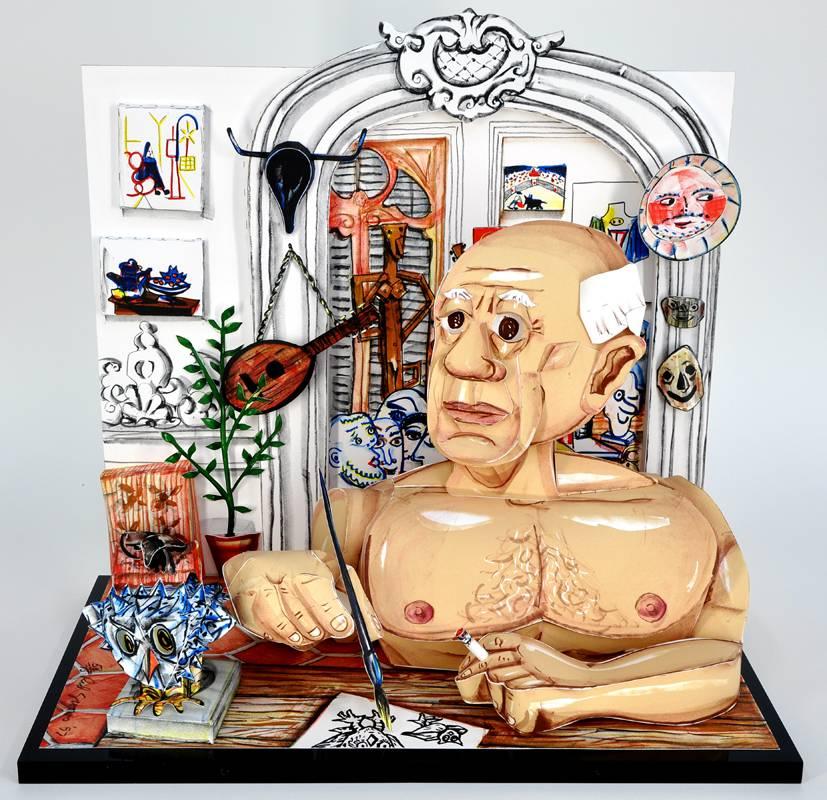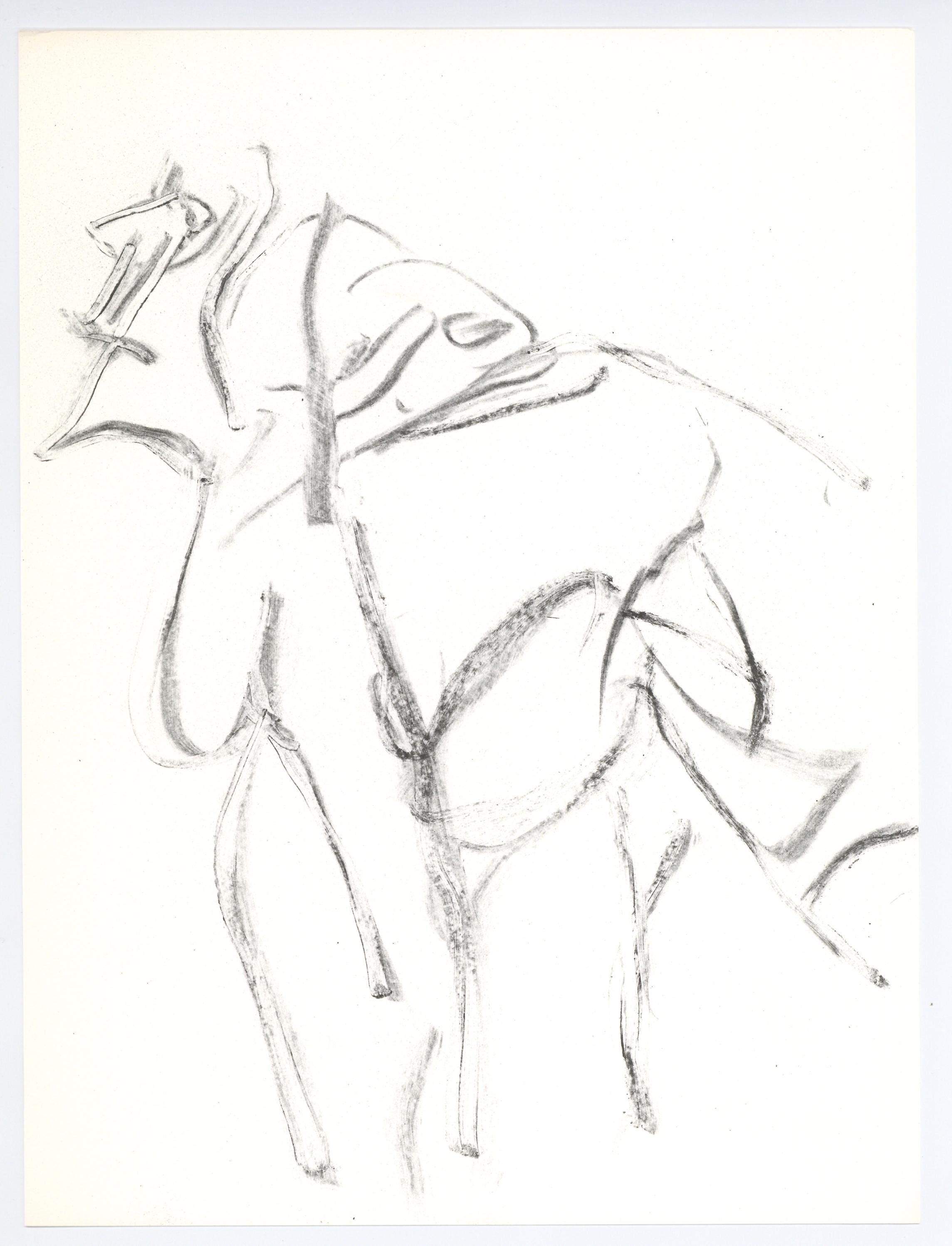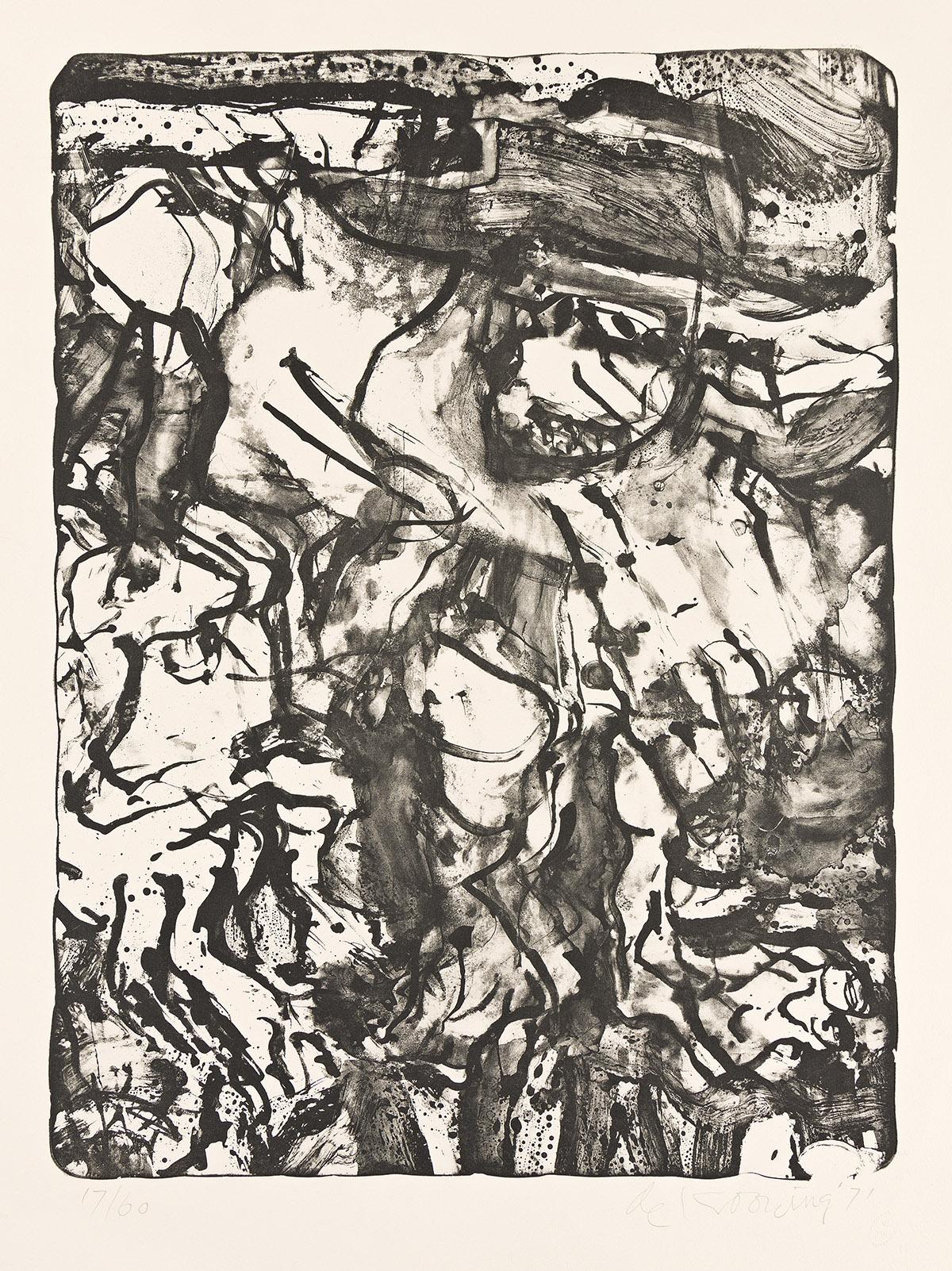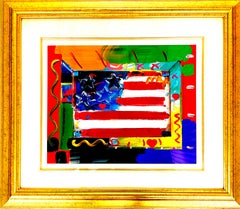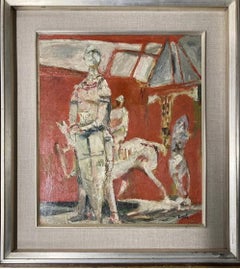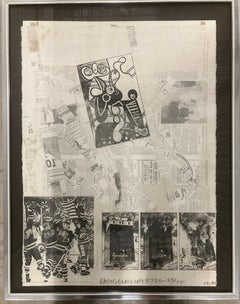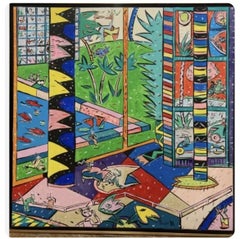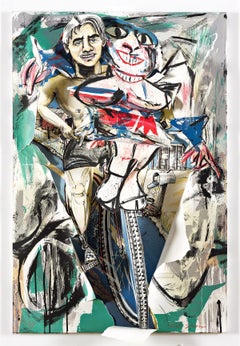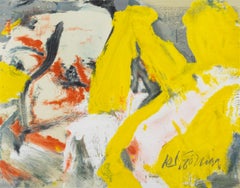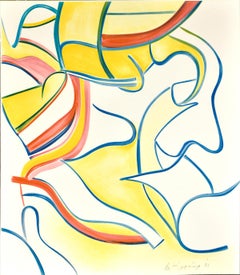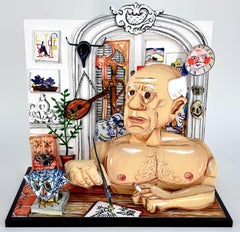Want more images or videos?
Request additional images or videos from the seller
1 of 10
Red Grooms“De Kooning”
$6,500
£4,954.05
€5,662.80
CA$9,145.09
A$10,018.16
CHF 5,273.17
MX$119,569.40
NOK 67,219.58
SEK 61,448.83
DKK 42,300.06
About the Item
Red Grooms “De Kooning Breaks Through” signed and numbered . In good condition measures 47x33
- Creator:Red Grooms (1937, American)
- Dimensions:Height: 47 in (119.38 cm)Width: 33 in (83.82 cm)
- More Editions & Sizes:Out of 75Price: $6,500
- Medium:
- Period:
- Condition:
- Gallery Location:Warren, NJ
- Reference Number:1stDibs: LU2336215765152
Red Grooms
Charles Roger Grooms was born in 1937 in Nashville, Tennessee, a city that, with its lively honky-tonk scene and the theatricality of the historic Grand Ole Opry, would later influence much of his work. Nicknamed for his ginger hair, Red enrolled at the Art Institute of Chicago in 1955. A self-proclaimed “restless and undisciplined student,” Grooms spent the next few years moving between schools and cities, including the New School in New York, Peabody College (now part of Vanderbilt University) in Nashville, and Hans Hofmann’s summer school in Provincetown, Massachusetts. Frustrated with the academic track and anxious to enter the New York art scene, Grooms abandoned formal education to focus exclusively on creating art and securing exhibition opportunities in his Chelsea neighborhood. There, he found quick success and a supportive circle of artists that became close friends and collaborators. From the start of his career, Grooms has worked in multiple media, from painting, printmaking, and sculpture, to installation art, filmmaking, and theatrical experiences known as “Happenings.” Much of his art blurs the boundaries between these different forms, such as his large-scale, carefully-crafted environments he calls “sculpto-pictoramas,” and smaller objects like Dalí Salad. In this example, Grooms combines silkscreened and lithographic elements with a wooden base and acrylic dome to create a three-dimensional portrait of the famous Surrealist artist. Grooms is perhaps best known for his colorful and comedic commentary on the culture, politics, and figures associated with the American urban environment and art historical traditions. Relying on satire and caricature, Grooms’ art has paid homage to a wide range of artists including Rembrandt, Auguste Rodin, Thomas Eakins, and Benjamin West, as well as national icons like Thomas Jefferson and Chuck Berry. Grooms’ disparate output is so difficult to classify that he has been compared to the influential Dada artist, Marcel Duchamp. Like Duchamp, Grooms often deliberately confronts the art world establishment, noting in 1974 that “it’s good to have . . . something to go against.” Despite his affinity for defying the mainstream, Grooms is routinely cited by scholars as one of the leading American artists of his generation and was honored with the National Academy of Design’s Lifetime Achievement Award in 2003. The subject of a 1984 mid-career retrospective exhibition held at the Pennsylvania Academy of the Fine Arts, the artist’s work can be found in public collections across the United States, including the Metropolitan Museum of Art, the Whitney Museum of American Art, and the Hirshhorn Museum and Sculpture Garden, as well as in many international museums. - The Johnson Collection, Spartanburg, South Carolina
About the Seller
5.0
Vetted Professional Seller
Every seller passes strict standards for authenticity and reliability
Established in 2023
1stDibs seller since 2023
67 sales on 1stDibs
Typical response time: <1 hour
- ShippingRetrieving quote...Shipping from: Warren, NJ
- Return Policy
More From This Seller
View All“Eastern Europe museum tour”
By Peter Max
Located in Warren, NJ
Peter Max original mixed media on paper “Eastern Europe museum tour” . In good condition measures 39x34
Category
21st Century and Contemporary Paintings
Materials
Oil
“Untitled”
Located in Warren, NJ
Kunio Komatsuzaki (Japanese 1913-1992), Oil on Canvas, 1963 . In good condition . Measures 29x26
Category
1960s Paintings
Materials
Oil
“After Homage to Picasso“
By Robert Rauschenberg
Located in Warren, NJ
This is a rare lithograph only 45 made. There is some foxing and toning, but it should be able to fix that. Still a great picture.
Measurements
imag...
Category
1970s Prints and Multiples
Materials
Lithograph
“Untitled”
Located in Warren, NJ
This is an rare Gerald Poussin original 1998 mixed media on canvas . In good condition measures 50x50 .
Category
1990s Mixed Media
Materials
Oil
$4,500
“Abstract figure”
By Andrew Turner
Located in Warren, NJ
Original oil on canvas in good condition. Measurements
Image size: 19 1/2 by 27 1/2 inches, overall 25
Category
20th Century Paintings
Materials
Oil
“Ballerinas”
Located in Warren, NJ
Bernard Taurelle original Oil Painting on canvas “Ballerinas”. In good condition measures 51x39
Category
20th Century Paintings
Materials
Oil
You May Also Like
De Kooning Breaks Through
By Red Grooms
Located in New York, NY
A very good impression of this three-dimensional color lithograph on Rives BFK wove paper, cut-out, glued and mounted on original white plastic base. Signed and numbered 18/75 in red...
Category
1980s Abstract Expressionist Abstract Prints
Materials
Color, Lithograph
The Man and the Big Blonde
By Willem de Kooning
Located in Missouri, MO
Willem de Kooning (Dutch, American, 1904-1997)
The Man and the Big Blonde, 1982
Offset Lithograph in Colors on Wove Paper
Numbered in Pencil LXXVII/CL (77/150) Lower Left
25.125 x 30...
Category
1980s Abstract Expressionist Abstract Prints
Materials
Paper, Color, Offset
Price Upon Request
Quatre Lithographies
By Willem de Kooning
Located in London, GB
The complete set of four lithographs in colours on Arches wove paper, 1986, each signed and dated in pencil, from the edition of 100 (plus 50 numbered with Roman numerals), in the or...
Category
1980s Abstract Abstract Prints
Materials
Lithograph
Price Upon Request
Picasso
By Red Grooms
Located in Lyons, CO
Color 3-D lithograph, Edition 75.
Red Grooms and Master printer Bud Shark began their many print collaborations in 1981 with "Mountaintime", followed in 1982 by their first three-dimensional lithograph, "Ruckus...
Category
1990s Contemporary More Prints
Materials
Lithograph
$12,000
(after) Willem de Kooning - lithograph
By Willem de Kooning
Located in Henderson, NV
Medium: lithograph. From the "In Memory of My Feelings" portfolio, printed in 1967 on Mohawk Superfine Smooth paper in a limited edition of 2500 and published in New York by The Muse...
Category
1960s Prints and Multiples
Materials
Lithograph
The Preacher
By Willem de Kooning
Located in New York, NY
A very good impression of this scarce lithograph on Arches buff paper. Signed, dated and numbered 17/60 in pencil by de Kooning. Printed by Hollander's Workshop, Inc., New York. Co-p...
Category
1970s Abstract Expressionist Abstract Prints
Materials
Lithograph
More Ways To Browse
Mercedes 300
Michele Cascella
Mma Metropolitan Museum Of Art
Peter Max Sailboat
Petra Antique
Protest Poster
Radcliffe Camera
Salvador Dali The Twelve Apostles
Tintin Art
Tokyo Poster
Vintage Apple Poster
Vintage Bull Matador
Vintage Kitchen Art Prints
Vintage Kitchen Posters
Vintage Posters Salvador Dali
Vintage Train Print
Warhol Flower Prints
Andy Warhol Ladies And Gentlemen
